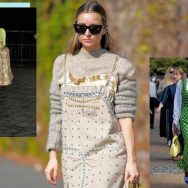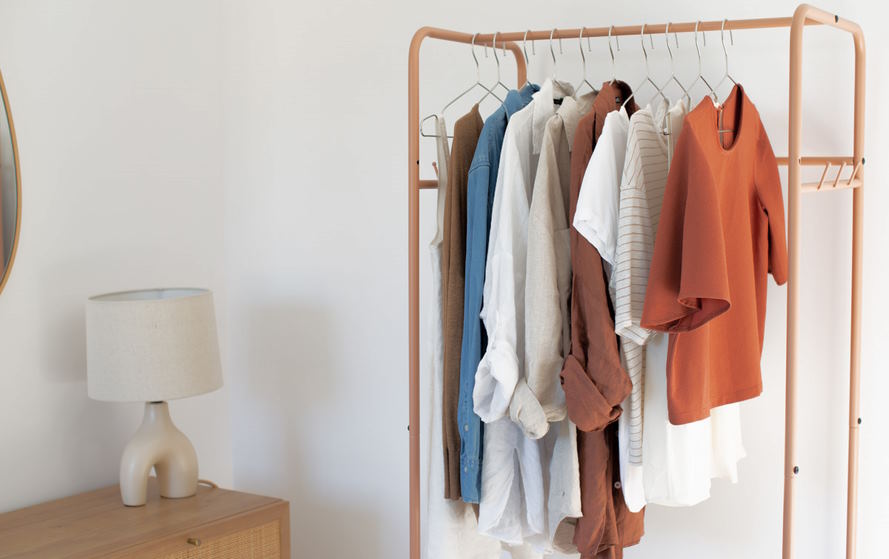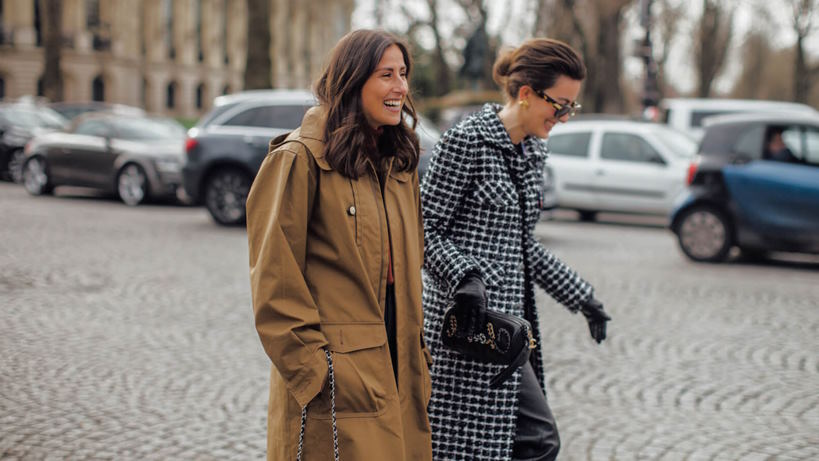Effortless Layering: Essential Tips and Techniques for Stylish Dressing
Posted on Nov 17, 2022 in Find Your Personal Style

If you’re looking to elevate your style game and create chic and fashionable outfits, then you’ve come to the right place. Layering is a timeless fashion technique that not only keeps you warm and cozy during colder months but also adds depth, texture, and visual interest to your ensembles all year round. But mastering the art of layering can seem daunting at first, with the risk of ending up looking bulky or frumpy. Fear not! In this blog post, we will share essential tips and techniques to help you achieve effortless layering for stylish dressing. Say goodbye to wardrobe dilemmas and hello to fabulous and functional outfits that are sure to turn heads! So, let’s dive in and unlock the secrets of mastering the art of effortless layering.
Building the Basics: Understanding the Fundamentals of Layering
Layering is a fundamental technique in fashion that can transform an ordinary outfit into a stylish and versatile ensemble. It involves wearing multiple clothing items on top of each other to create depth, dimension, and visual interest. Layering not only adds warmth and functionality to your wardrobe, but also allows you to express your personal style and creativity.
To effectively layer your clothing, it’s important to understand the concept of layering and how it works in fashion. Layering involves wearing different types of clothing items together to create a cohesive look. Tops, bottoms, outerwear, and accessories can all be used for layering, allowing you to mix and match various pieces to create a unique outfit that reflects your individual style.
When selecting clothing items for layering, consider the fabrics, colors, and patterns. Choose fabrics that complement each other and work well together in terms of weight, texture, and drape. Lightweight fabrics like chiffon or silk can be layered for a breezy and feminine look, while heavier fabrics like wool or denim can be layered for added warmth and structure.
Colors and patterns are also essential considerations in layering. Experiment with different color combinations, such as complementary or monochromatic schemes, to create visual interest and balance. Mix patterns, such as stripes, florals, and plaids, for a trendy and eclectic look. However, be mindful of clashing patterns that can overwhelm the outfit.
Proper fit and proportion are crucial elements of layering for a polished look. Pay attention to the fit of each individual layer and ensure that they work well together. Avoid bulky or ill-fitting layers that can create a sloppy appearance. Instead, opt for pieces that fit comfortably and allow for ease of movement.
Proportion is also important in layering. Consider the lengths of your layers, such as pairing a longer tunic with leggings or a cropped jacket with high-waisted jeans. Play with different hemlines and silhouettes to create visual balance and harmony in your layered look.
Understanding the fundamentals of layering is key to mastering this stylish technique. Experiment with different types of clothing items, fabrics, colors, and patterns to create cohesive and eye-catching layered looks. Pay attention to proper fit and proportion for a polished and well-put-together outfit. With these basics in mind, you can confidently layer your clothing to elevate your style and create versatile and chic ensembles.

The Art of Mixing and Matching: Combining Different Pieces to Create a Cohesive Look
Layering is not only about adding warmth and functionality to your outfit, but also about creating a cohesive and stylish look that reflects your personal style. Mixing and matching different clothing items is an art that allows you to create endless outfit possibilities and express your creativity. Here are some tips and techniques for mastering the art of mixing and matching in your layered ensembles.
One of the key elements in creating a cohesive look when layering is color coordination. Choose colors that work well together and complement each other. You can opt for a monochromatic look by layering different shades of the same color for a chic and sophisticated vibe. Alternatively, you can experiment with complementary colors, such as pairing warm and cool tones, to create contrast and visual interest.
Pattern mixing is another technique that can add depth and dimension to your layered outfits. Don’t be afraid to mix patterns, such as stripes, florals, and checks, but keep in mind the scale and intensity of the patterns. Choose patterns that complement each other and create a harmonious balance. For example, you can pair a small-scale floral top with a larger-scale plaid scarf for a trendy and eclectic look.
Texture pairing is also important in layering. Mixing different textures can create visual interest and add tactile appeal to your outfit. For example, you can pair a chunky knit sweater with a sleek leather jacket, or a silky blouse with a cozy faux fur vest. Experiment with different textures, such as smooth, rough, soft, and structured, to create contrast and depth in your layered look.
When it comes to outfit combinations, the possibilities are endless. For casual occasions, you can layer a denim jacket over a graphic tee with distressed jeans and ankle boots for a trendy and relaxed vibe. For a chic office look, you can layer a tailored blazer over a blouse with a pencil skirt and pumps. In colder seasons, you can layer a turtleneck sweater under a statement coat with leggings and knee-high boots for a cozy and stylish ensemble.
It’s also important to consider the occasion and season when mixing and matching different pieces for layering. For example, in the summer, you can layer a lightweight kimono over a tank top with shorts and sandals for a boho-inspired look. In the fall, you can layer a plaid button-up shirt over a sweater with skinny jeans and ankle boots for a cozy and on-trend outfit.
Mastering the art of mixing and matching is essential for creating cohesive and stylish layered looks. Experiment with color coordination, pattern mixing, and texture pairing to create visual interest and depth in your outfits. Consider the occasion and season when layering different pieces, and don’t be afraid to express your personal style through creative combinations. With these techniques in mind, you can confidently create unique and fashionable layered ensembles that elevate your style to new heights.

Seasonal Layering: Adapting Layering Techniques to Different Weather Conditions
Layering is not only a stylish fashion technique, but it’s also highly functional in adapting to different weather conditions throughout the year. Whether it’s sweltering hot in the summer or freezing cold in the winter, layering can help you stay comfortable and fashionable. Here are some tips and techniques for adapting layering to different weather conditions.
Layering for Warmth in Colder Weather
When facing colder weather, layering becomes a key strategy for keeping warm while maintaining a stylish look. The key is to choose appropriate fabrics and add insulation layers to trap heat. Start with a moisture-wicking base layer to keep sweat away from your skin, then add a middle layer for insulation, and finish with a top layer for protection from wind and cold.
For insulation, opt for thicker fabrics like wool, down, or fleece that provide warmth without adding too much bulk. Invest in a good quality coat or jacket that fits well and provides proper insulation. Accessories like scarves, gloves, and hats can also be added to keep extremities warm.
Layering Techniques for Staying Cool in Hot Weather
Layering can also be adapted to keep you cool and comfortable during hot weather. The key is to choose lightweight and breathable fabrics that allow air circulation and provide ventilation. Opt for loose-fitting and flowy clothing that doesn’t cling to your body and allows for easy movement.
Consider wearing a breathable and moisture-wicking base layer, such as a cotton or linen tank top, to keep sweat away from your skin. Add a lightweight and airy middle layer, such as a sheer kimono or a linen overshirt, for added sun protection and style. Avoid dark colors and heavy fabrics that can trap heat.
Examples of Stylish Layered Looks for Different Seasons
Layering is not only practical, but it’s also an opportunity to create stylish looks for different seasons, including transitional periods. In the fall, you can layer a denim jacket over a lightweight sweater with leggings and ankle boots for a chic and cozy outfit. In the spring, you can layer a floral blouse under a denim vest with skinny jeans and sneakers for a fresh and trendy look.
During the summer, you can layer a lightweight cardigan over a tank top with shorts and sandals for cooler evenings. In the winter, you can layer a turtleneck sweater under a puffer coat with jeans and knee-high boots for a fashionable and warm ensemble. Experiment with different combinations of clothing items, fabrics, and colors to create unique and stylish layered looks that suit the season and your personal style.
In conclusion, layering is a versatile technique that can be adapted to different weather conditions, allowing you to stay comfortable and stylish year-round. Consider the appropriate fabrics, insulation layers, and ventilation techniques for colder and warmer weather. Experiment with different layered looks for transitional seasons, and don’t be afraid to express your personal style through creative layering. With these tips and techniques, you can confidently adapt layering to any weather condition and create fashionable ensembles that keep you comfortable and stylish all year long.

